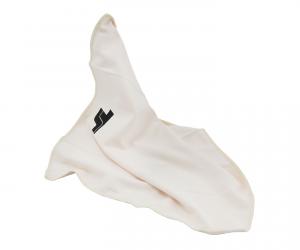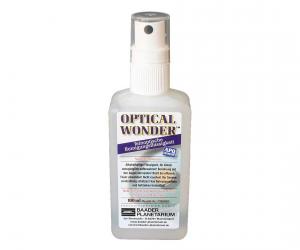- Telescopes
- Overview:
Telescopes - Achromatic Refractor
- Apochromatic Refractor
- Overview:
Apochromatic Refractor - ED Refractor - less color aberration than an achromatic
- SD APO - color free 2-element APO objective
- EDT APO - 3 element ED objective
- High End APO with 3-element APO objective - no color aberation
- Flatfield APO with flat field for Astrophotography
- All Apos and EDs from all manufacturers - large overview
- TS APO and ED from Japan with high quality optics
- Overview:
- Newtonian Telescopes
- Dobsonian Telescopes
- RC Ritchey Chretien Telescopes
- Casssegrain Telescopes
- Reflektor Telescopce with Lens Correcture
- Maksutov Cassegrain Telescopes
- GoTo Telescopes
- Solar Telescopes H-Alpha
- Overview:
- Mounts Tripods Rings Rails Power Supply ...
- Overview:
Mounts Tripods Rings Rails Power Supply ... - Mounts Equatorial with GoTo
- Mounts Equatorial without GoTo
- Mounts Azimutal with GoTo
- Mounts Azimutal without GoTo
- Mounts GoTo - Harmonic Drive
- Travel mounts for astro imaging
- Tripods Piers Polar Wedges
- Mount Control & Electronics
- Dovetail Clamps, Plates and Mount Adapters
- Tube Rings
- Power Supply
- Counterweights Balance Weights
- Mount Accessories - Other
- Overview:
- Telescope Accessories
- Overview:
Telescope Accessories - Eyepieces
- Barlows & Reducer Lenses
- Diagonal Mirrors and Prisms
- Binocular Viewers
- Finder Scopes
- Telescope Collimation and Test
- Cleaning Tools
- Transport and Storage
- Dust protection for Telescopes & Accessories
- Stray Light Protection
- Dewcaps and Heater
- Focusers, Adapters, Motorfocus
- Telescope DIY & Improvement
- Other telescope accessories
- Replacement Parts
- Overview:
- Filters
- Overview:
Filters - Color Filters and Color Filtersets
- Nebular Filters for Visual Observing
- Neutral-Density and Polfilter
- Photo Narrowband Nebular Filters
- Photo Broadband Filters
- Photo Planetary Filters
- Photo R-G-B and IR Cut Filters
- Photo - Filtersets
- Photometric Filters
- Clip Filter for DSLR Cameras
- Filter Wheels and Filterslider
- Solar Filters for white light
- Solarfilter for H-Alpha and Calcium
- Overview:
- Adaptors
- Overview:
Adaptors - Adapter 1,25" and 24,5mm
- Adapter 2"
- Adapter T2 - M42x0.75
- Adapter M48x0,75
- Adapter M54
- Adapter SC
- Adapter M63
- Adapter M68
- Adapter to other Threads
- Adapter Extensions
- Adapter camera bayonet
- Adapter Objective Filterthread
- Adapter Quick Changing , Rotation
- Adapter Eyepiece Projection
- Adapters Tilting
- Overview:
- Astrophotography and Photography
- Overview:
Astrophotography and Photography - Cooled Cameras
- Cameras without Cooling
- Deep-Sky Cameras uncooled
- Set-Offers Camera, Filter, Wheels
- Acessories for Cameras
- Travel mounts for astro imaging
- Imaging Correctors for Telescopes
- Autoguiding Cameras & Sets
- Everything for Guiding
- Focusing aids - Bahtinov mascs
- Flat Field foils and boxes
- Lenses for Cameras
- Piggyback Camera Holder
- Camera Bags, Photocases & more
- Digital Camera and Smartphone Adapter
- Other photo accessories
- Overview:
- Binoculars, Spotting Scopes, Microscopes, Range Finders
- Overview:
Binoculars, Spotting Scopes, Microscopes, Range Finders - Spotting Scopes and Acessories
- Roof Prism Binoculars
- Binoculars with Porro prisms
- Binoculars from 100mm Aperture
- Binoculars with 1,25 inch eyepieces
- TSMX APO Binoculars
- Binoculars for Astronomy
- Binoculars Hiking Bird watching
- Monoculars - Opera Binoculars
- Accessories for Binoculars
- Range Finders
- Microscopy
- Bags for Phototripods & Binoculars
- Overview:
- Phototripods and Binomounts
- Books, Software
- Overview:
Books, Software - Books for Astronomy Beginners
- Star Charts and Planispheres
- Books about our Solar System
- Observing Tips for Amateurs
- Popular Astronomy Literature
- Teaching material
- Astrophotography books
- Telescopes, Observatories, Construction
- Calendars Yearbooks
- Software, Star Charts
- Books for Microscopers
- Books Nature and Animals
- Nature Photography TimeLapse
- Overview:
- Night Vision, Magnifiers, Weather, Domes & more
- Beginner Astronomy and Gift Ideas
- Second Hand & Special Offers
- New products
Manufacturer: Astronomik Filter
Product number: ASHBCCD50S
EUR339.00new
EUR 339,00
incl. 19 % VAT (DE)
The VAT indicated refers to that applicable in Germany. After logging in, the VAT amount is adjusted to the applicable VAT of the stored delivery country. Therefore, the final price may vary accordingly.
excl. 6.95 € shipping costs (DE)
more details to the shipping costs ...Please log in to calculate shipping costs to your country.
There are no reviews for this product
- Details..
- Technical data..
- In the box..
- Manufacturer infos..
- Safety informations..
The Astronomik H-beta filter is a narrow band emission-line filter for astro photography. The filter lets the H-beta light of emission nebulae pass and blocks nearly the whole remainder of the spectrum where the sensor is sensitive.
The full width at half-maximum (FWHM) of 12 nm is optimized for the use with common astro cameras and allows the use of very fast optics. It should be noted that the filter has a transmission of up to 99%. Another advantage of the 12 nm filters is the better availability of guiding stars for cameras with a built-in autoguider (SBIG). If you use a very strong filter like the H-alpha 6 nm filter, you often won’t find a usable guidestar.
Together with two of the other three Astronomik emission-line filters, you can make great color images even from very light polluted places!
The filter has a built-in IR-blocker up to 1150 nm. You don’t need an additional IR-blocker with this filter.
Main use:
The Astronomik H-beta filter increases the contrast between objects, in this case between the H-beta emission line and the skyglow background. This filter completely suppresses the emission lines of artificial lighting (mercury (Hg) and sodium (Na)) and skyglow. The optimal aperture ratio for this filter is 1:3.5 to 1:6. The range of application extends from 1:2.8 to 1:15. Transmission losses and chromatic distortions, which arise with other filters, only occur with Astronomik filters when extremely bright aperture ratios of 1:2 and more come into play.
Other uses: When using the Astronomik H-beta filter together with the H-alpha, [O III] and the [S II] filters, you can obtain three-color images of emission line objects (gas nebulae) from locations with very strong light pollution. To do so, you would take an image in three different wavelengths, select each one as a color-channel in Photoshop and paste them together as a color image. When using the Astronomik H-beta filter together with the H-alpha filter, you can create charts of the ionization energy in nebulas by creating an image from the ratio of H-alpha vs. H-beta. If you plan to create color images from emission line data, the CLS-CCD filter is a great choice for the Luminance channel The H-beta filter is also great for visual observation. If you plan to get filters for visual observation and for astrophotography, get the photgraphic filter: You may use this filter visual as well as in front of you camera. The built-in IR-blocker doesn’t disturb visual observation, but you need an additional IR-blocker if you want to use the visual filter with your camera.
Suitability: Visual observation (dark skies): Very good, but only suitable for a few objects Visual observation (urban skies): Unsuitable Film photography: It depends, very long exposure time CCD and CMOS photography: Very good, but only suitable for a few objects DSLR photography (original): Very good, but only suitable for a few objects DSLR photography (astro modified): Very good, but only suitable for a few objects DSLR photography (MC modified): Very good, but only suitable for a few objects Webcam / Video (Planets): Unsuitable Webcam / Video (Deep Sky): Unsuitable
Technical Data: 98% transmission at 486 nm (H-beta) full width at half maximum: 12 nm complete blocking from 350 nm to 470 nm and 500 nm to 1100 nm Parfocal with other Astronomik filters Glass thickness: 1 mm Completely resistant against high humidity, scratches and aging effects Diffraction limited, the filter will not reduce the optical performance of your telescope! Astronomik filters are delivered in a high-quality, long lasting, filter box
Filter transmission curve:

The horizontal axis is the wavelength in nanometers (nm). 400 nm is deep blue, at 520 nm the human eye senses green and at 600 nm red. At 656 nm is the famous "H-Alpha" emission line of hydrogen. The transmission in % is plotted on the vertical axis. The red line shows the transmission of the filter. Visual filters: The grey line in the background shows the relative sensitivity of the human eye at night. The maximum is at ~510 nm and drops to longer and shorter wavelengths. You can easily see, that you can´t see anything of the H-alpha line at night (even if you can during daylight!) The sensitivity at 656 nm is 0% at night! Photographic filters: The grey line in the background shows the sensitivity of a typical astro camera sensor. The most important artifical emission lines are shown in orange. The artifical light pollution is dominated by mercury (Hg) and sodium (Na), which are used in nearly all streetlights. The most important emission lines from nebulas are shown in green. The most important lines are from ionized hydrogen (H-alpha and H-beta), double ionized oyxgen ([O III]) and ionized sulfur ([S II]). The square brackets indicate that these lines are forbidden.
The full width at half-maximum (FWHM) of 12 nm is optimized for the use with common astro cameras and allows the use of very fast optics. It should be noted that the filter has a transmission of up to 99%. Another advantage of the 12 nm filters is the better availability of guiding stars for cameras with a built-in autoguider (SBIG). If you use a very strong filter like the H-alpha 6 nm filter, you often won’t find a usable guidestar.
Together with two of the other three Astronomik emission-line filters, you can make great color images even from very light polluted places!
The filter has a built-in IR-blocker up to 1150 nm. You don’t need an additional IR-blocker with this filter.
Main use:
The Astronomik H-beta filter increases the contrast between objects, in this case between the H-beta emission line and the skyglow background. This filter completely suppresses the emission lines of artificial lighting (mercury (Hg) and sodium (Na)) and skyglow. The optimal aperture ratio for this filter is 1:3.5 to 1:6. The range of application extends from 1:2.8 to 1:15. Transmission losses and chromatic distortions, which arise with other filters, only occur with Astronomik filters when extremely bright aperture ratios of 1:2 and more come into play.
Other uses:
Suitability:
Technical Data:
Filter transmission curve:

| Transmission of the H-beta line at 486 nm: | 98% |
| IR blocking: | yes |
| Main operational use: | Hydrogen nebulae |
| Anti reflective coating: | No moisture-sensitivity, no aging, and totally scratch-proof |
| Carrier material: | optically polished substrate |
| Parfocal: | With all other Astronomik filters |
| Glass thickness: | 1 mm |
| Manufacturer / Importeur: | Vesting e.K. |
| Street: | Storchenweg 6 |
| ZIP / City: | 21217 Seevetal |
| Country: | Germany |
| Telefon number: | +49 40 5114348 |
| Email: | astro@astro-shop.com |
| Website: | www.astro-shop.com |
Safety informations: PDF Download
Recommended accessories
Cleaning & Collimating
TS-Optics Optical Super Microfiber Cleaning Cloth
EUR 4,99RRP EUR 7,95you save 37.2% (EUR 2,96)
Reviews













